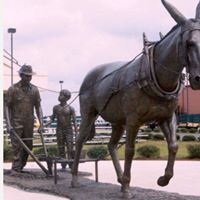What was the first bicycle that emerged in the USA?
Vehicles for human transport that have two wheels and require balancing by the rider date back to the early 19th century.
The first period which may be called a bicycle craze actually refers to a precursor of the bicycle which was pushed along by the feet on the ground as in walking, and did not have pedals.
This machine was invented by Baron Karl von Drais in Germany, and was called variously a "draisine" or "The first period which may be called a bicycle craze actually refers to a precursor of the bicycle which was pushed along by the feet on the ground as in walking, and did not have pedals.
This machine was invented by Baron Karl von Drais in Germany, and was called variously a "draisine" (English) or "draisienne" (French) after his name, a "velocipede" from the Latin terms for "fast foot", a "hobby horse".
Drais got a patent for his invention in 1818, and the craze swept Europe and the United States during the summer of 1819 while many manufacturers.
Drais got a patent for his invention in 1818, and the craze swept Europe and the United States during the summer of 1819 while many manufacturers either copied Drais's machine or created their own versions, then quickly died out as many pedestrians began to feel threatened by the machines and municipalities enacted laws prohibiting their use.
The first verifiable claim for a practically used bicycle belongs to German Baron Karl von Drais, a civil servant to the Grand Duke of Baden in Germany.
More Info:
en.wikipedia.org




